Showing 21–40 of 150 results
-
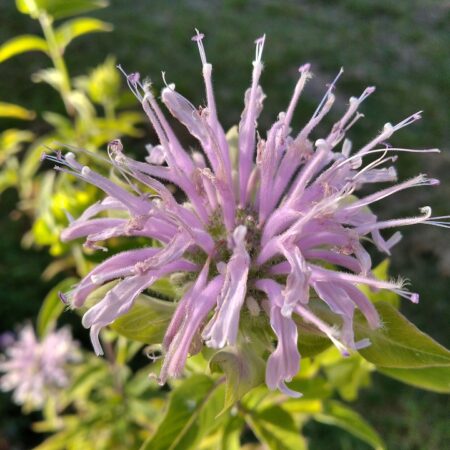
Bergamot – Wild
$8.50Add to cartWild Bergamot (Monarda fistulosa) is a hardy perennial in the Lamiaceae family. Grows 90–120 cm tall, lavender to pale pink shaggy flowers, native to North America. Adaptable growing conditions, thrives in dry, sandy, or rocky soils; full sun.
Traditional medicine of First Nations peoples for colds, flu, and stomach upsets; aromatic tea; strong pollinator draw.
-

Burdock
$8.50Add to cartBurdock (Arctium lappa) is a biennial herb in the Asteraceae family. It prefers sun to partial shade and deep, well-drained soil, and is moderately hardy in New Zealand, though severe frosts may damage growth. Plants grow up to 2 m tall with a large taproot, broad leaves, and round purple flower heads that form hooked burrs. Mainly valued as a culinary root vegetable (gobo in Japanese cuisine), a medicinal plant for cleansing and detox support, a cottage garden feature with bold foliage, and a pollinator plant attracting bees and butterflies.
-

Burn Jelly Plant – Bulbine (Orange Flowering)
$9.00Add to cartBurn Jelly Plant (Bulbine frutescens) is a perennial succulent herb in the Asphodelaceae family. It prefers full sun and well-drained soil, and in New Zealand is hardy in frost-free areas, though protection may be needed in colder regions. It grows up to 30–40 cm tall and wide, forming clumps of fleshy green leaves with tall stems of yellow or orange star-shaped flowers. Best known as a medicinal plant for its soothing leaf gel used on burns and bites, it also serves as a cottage garden feature with its long blooming season and as a pollinator plant attracting bees and butterflies
-

Burn Jelly Plant – Bulbine (Yellow Flowering)
$9.00Add to cartBurn Jelly Plant (Bulbine frutescens) is a perennial succulent herb in the Asphodelaceae family. It prefers full sun and well-drained soil, and in New Zealand is hardy in frost-free areas, though protection may be needed in colder regions. It grows up to 30–40 cm tall and wide, forming clumps of fleshy green leaves with tall stems of yellow or orange star-shaped flowers. Best known as a medicinal plant for its soothing leaf gel used on burns and bites, it also serves as a cottage garden feature with its long blooming season and as a pollinator plant attracting bees and butterflies
-

Calendula
$6.50Add to cartCalendula (Calendula officinalis) is an annual herb in the Asteraceae family. It prefers full sun to part shade and well-drained, moderately fertile soil, and in New Zealand it is hardy across most regions, self-seeding freely. Growing 30–60 cm tall and 25–40 cm wide, it has bright orange to golden daisy-like flowers. Used as a medicinal herb for its healing, anti-inflammatory blooms, a culinary herb with edible petals, a cottage garden favourite for colour and charm, and a pollinator plant attracting bees and beneficial insects.
-
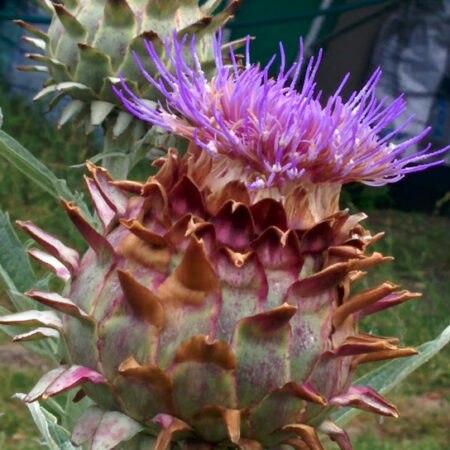
Cardoon
$10.50Add to cartCardoon (Cynara cardunculus) is a perennial in the daisy family (Asteraceae). It prefers full sun and well-drained, fertile soil, and is moderately frost-hardy in most of New Zealand. Growing 1.5–2 m tall and 1 m wide, it features striking silver-grey leaves and tall stalks of purple thistle-like flowers. Mainly valued as a culinary plant for its blanched stems with a mild artichoke flavour, a cottage garden ornamental for bold, architectural form, a pollinator plant attracting bees, and a medicinal herb supporting healthy digestion and liver function.
-
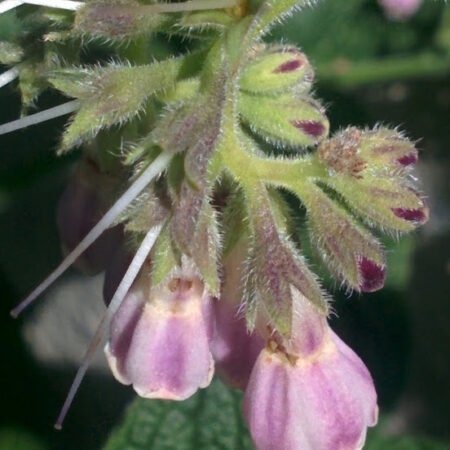
Comfrey – purple flowering common
$8.50Add to cartA tall perennial (to 1.2m) with large, rough, hairy leaves and nodding clusters of purple-blue to creamy flowers. Very vigorous spreader by root division, and often considered invasive. More traditional medicinal use, but less preferred for garden fertility because of its tendency to self-seed.
-

Comfrey – white flowering dwarf evergreen
$8.50Add to cartLikely Symphytum ibericum (Caucasian comfrey). A low-growing, creeping perennial (to 30cm high, spreading wider) with dense mats of rough green leaves and clusters of white bell-like flowers. Excellent groundcover in shady, moist conditions, especially under trees. Rarely used medicinally, but valued as an ornamental and living mulch.
-
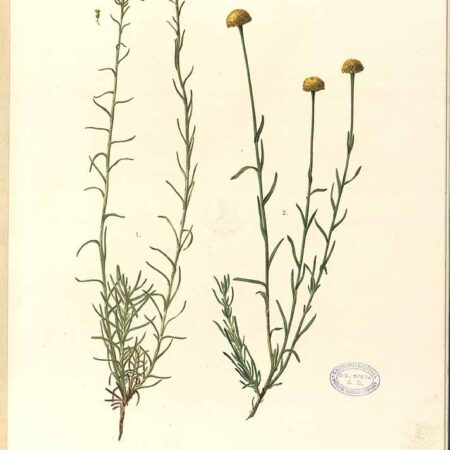
Curry bush
$8.50Add to cartA hardy EVERGREEN SHRUB growing to 60cm (2ft) with silver-green leaves and clusters of yellow button-like flowers. Grow in well-drained soil. It tolerates drought and prefers a full sun position.
Although highly aromatic, smelling strongly of curry mixes, it is rarely used as a condiment, and when used to flavour cooking, is removed before eating. -
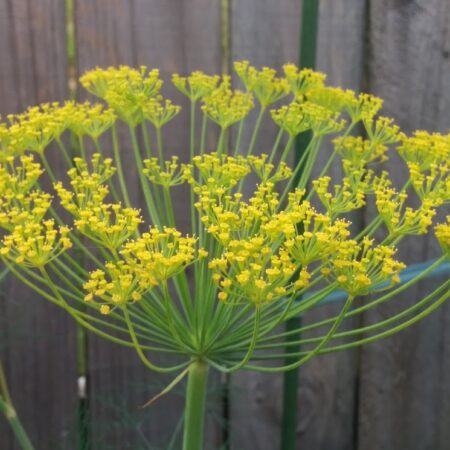
Dill
$6.50Add to cartAn ANNUAL growing to 80cm with slender hollow stems and alternate, finely divided, softly delicate leaves. Small yellow flowers are born in umbels. Prefers a full sun position in a moist and well-drained soil. Edible leaves and seeds, it is also good as a companion plant to attract hoverflies and other predatory insects. Highly nutritious, it has a long history of medicinal use.
-

Elderberry
$9.50Add to cartElderberry is a small tree or shrub growing to 6mx6m at a fairly fast rate. The plant is known as the ‘Medicine Chest’ of the country people for its associated medicinal qualities. Note that all parts except the blossoms and the very ripe berries, are poisenous and should not be ingested. The flowers are used a flavouring to make elderflower tea, or elderflower sparkling wine and eldeflower syrups among many other culinary uses. The berries too are made into syrups or brewed into teas.
-
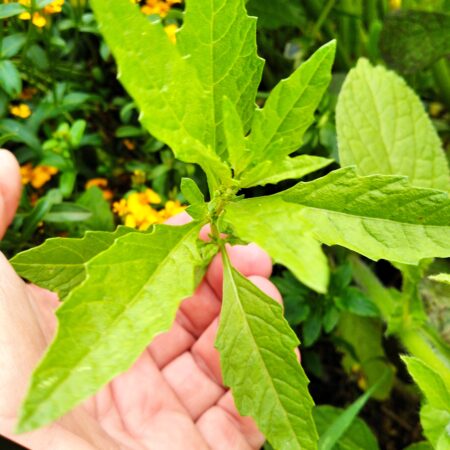
Epazote
$7.50Add to cartEpazote (Dysphania ambrosioides) is a strongly aromatic culinary herb in the Amaranthaceae family, growing 60–100cm tall. It prefers sun and well-drained soil and is best used sparingly in Mexican and Central American cooking, particularly with beans. Traditionally valued for its digestive and medicinal qualities, though large doses can be toxic.
-
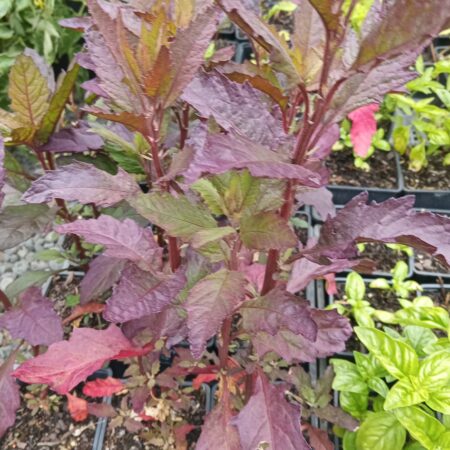
Epazote – Oaxacan Red
$8.50Add to cartEpazote (Dysphania ambrosioides) Oaxacan Red is a strongly aromatic culinary herb in the Amaranthaceae family, growing 60–100cm tall. It prefers sun and well-drained soil and is best used sparingly in Mexican and Central American cooking, particularly with beans. Traditionally valued for its digestive and medicinal qualities, though large doses can be toxic. This red-leaved forms adds ornamental appeal.
-
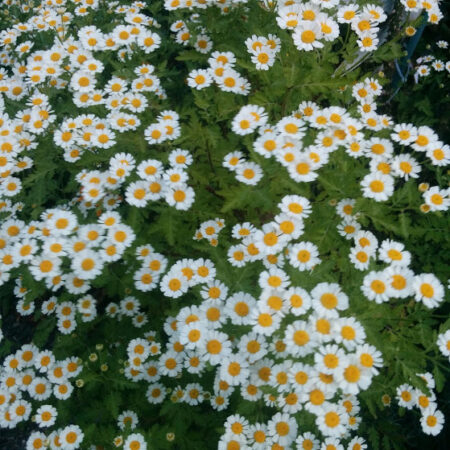
Feverfew
$8.50Add to cartA flowering PERENNIAL plant in the daisy family growing to 60cm. The small bush has pungently scented light green to yellowish-green leaves and daisy-like flowers.
It prefers well-drained soil in a full sun position and can tolerate somewhat strong winds. Mostly used as a medicinal herb, but the flowers and leaves have some culinary use. -
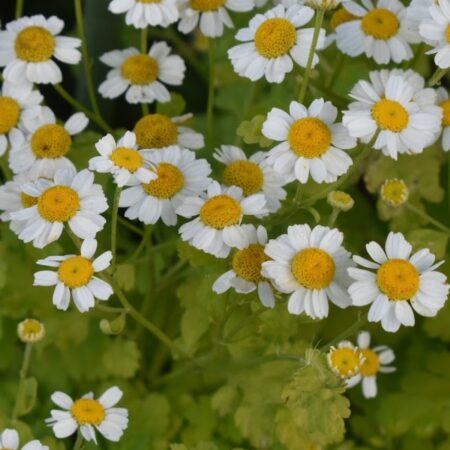
Feverfew – Golden
$8.50Add to cartA flowering PERENNIAL plant in the daisy family growing to 60cm. The small bush has pungently scented bright golden green to yellowish-green leaves and daisy-like flowers.
It prefers well-drained soil in a full sun position and can tolerate somewhat strong winds. Mostly used as a medicinal herb, but the flowers and leaves have some culinary use.
-
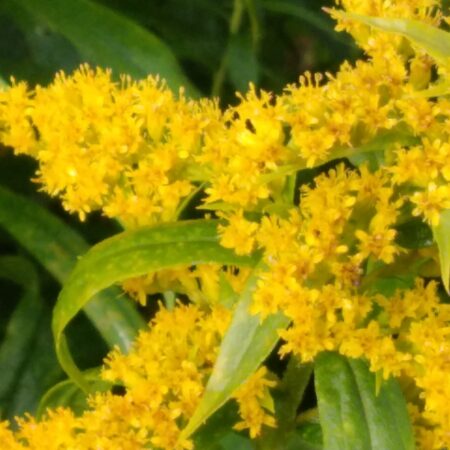
Goldenrod
$8.50Add to cartSolidago, or Goldenrod, boasts bright yellow clusters of flowers that enliven landscapes in late summer and fall, attracting bees and butterflies with its rich nectar source. This perennial herb’s potential medicinal uses include relief from urinary issues and hay fever, showcasing anti-inflammatory benefits and ecological significance in supporting pollinator populations.
-

Goldenrod Dwarf – Baby Gold
$8.50Add to cartSolidago, or Goldenrod, boasts bright yellow clusters of flowers that enliven landscapes in late summer and fall, attracting bees and butterflies with its rich nectar source. This perennial herb’s potential medicinal uses include relief from urinary issues and hay fever, showcasing anti-inflammatory benefits and ecological significance in supporting pollinator populations.
-
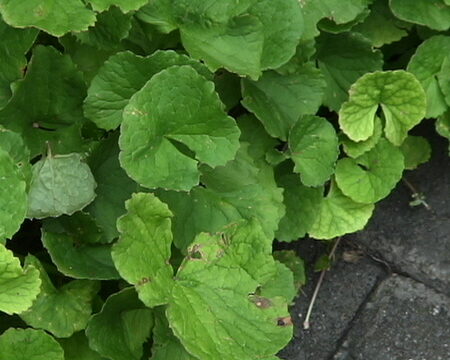
Gotu Kola
$8.50Add to cartAn EVERGREEN HERBACEOUS PERENNIAL growing to 20cm and spreading. Frost tender , it can grow in semi-shaded areas or in full sun, and prefers moist or wet soils.
Stems are slender, creeping stolons from a cream-coloured rhizomatous rootstock. Leaves are kidney-shaped and palmately veined.
It is used as a culinary vegetable and as medicinal herb. -
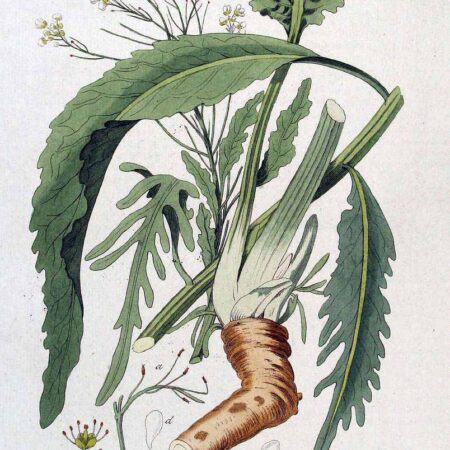
Horseradish
$10.50Add to cartA PERENNIAL of the mustard family growing to 70cm. Prefers a moist and well-drained soil and can grow in very alkaline soils. Full sun or semi-shade.
The young leaves are distinctly different to older leaves, being asymettric spiky before becoming flat and broad.
The plant is cultivated mostly for its large, white, tapered root which is a vegetable and spice. It has medicinal use. -
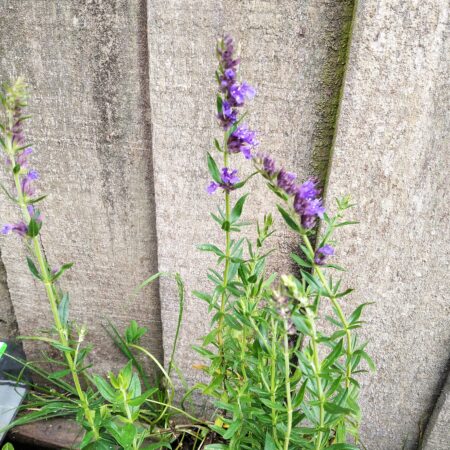
Hyssop Blue
$8.50Add to cartHyssop (Hyssopus officinalis) is a Mediterranean herb cherished for its aromatic qualities and diverse uses in enhancing culinary dishes and herbal remedies, providing a blend of antiseptic, expectorant, and anti-inflammatory properties for respiratory health. This is the standard blue variety.
